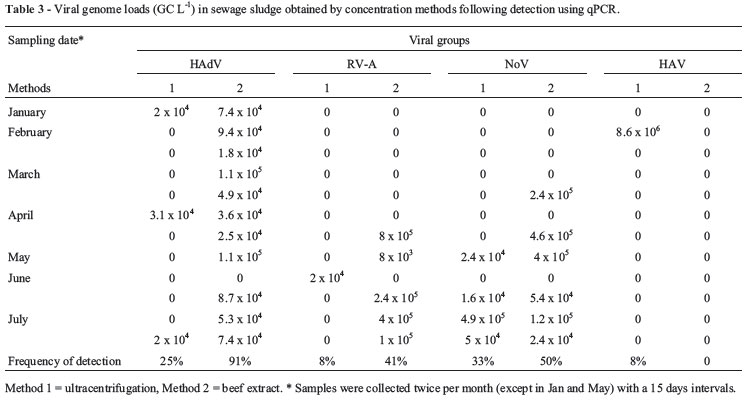Human enteric viruses are responsible to cause several diseases, including gastroenteritis and hepatitis, and can be present in high amounts in sewage sludge. This study compared virus recovery efficiency of two feasible concentration methods used for detecting human adenovirus (HAdV), rotavirus species A (RV-A), norovirus genogroup II (NoV GII) and hepatitis A virus (HAV) in sewage sludge from an activated sludge process. Twelve sewage sludge samples were collected bi-monthly from January to July, 2011. Ultracentrifugation was compared with a simplified protocol based on beef extract elution for recovering enteric viruses. Viruses were quantified by quantitative real-time PCR assays and virus recovery efficiency and limits of detection were determined. Methods showed mean recovery rates lower than 7.5%, presenting critical limits of detection (higher than 10² 10³ genome copies -GC L-1 for all viruses analyzed). Nevertheless, HAdV were detected in 90% of the analyzed sewage sludge samples (range: 1.8 x 10(4) to 1.1 x 10(5) GC L-1), followed by RV-A and NoV (both in 50%) and HAV (8%). Results suggesting that activated sludge is contaminated with high viral loads and HAdV are widely disseminated in these samples. The low virus recovery rates achieved, especially for HAV, indicate that other feasible concentration methods could be developed to improve virus recovery efficiency in these environmental matrices.
enteric viruses; sewage sludge; activated sludge process; virus concentration methods



